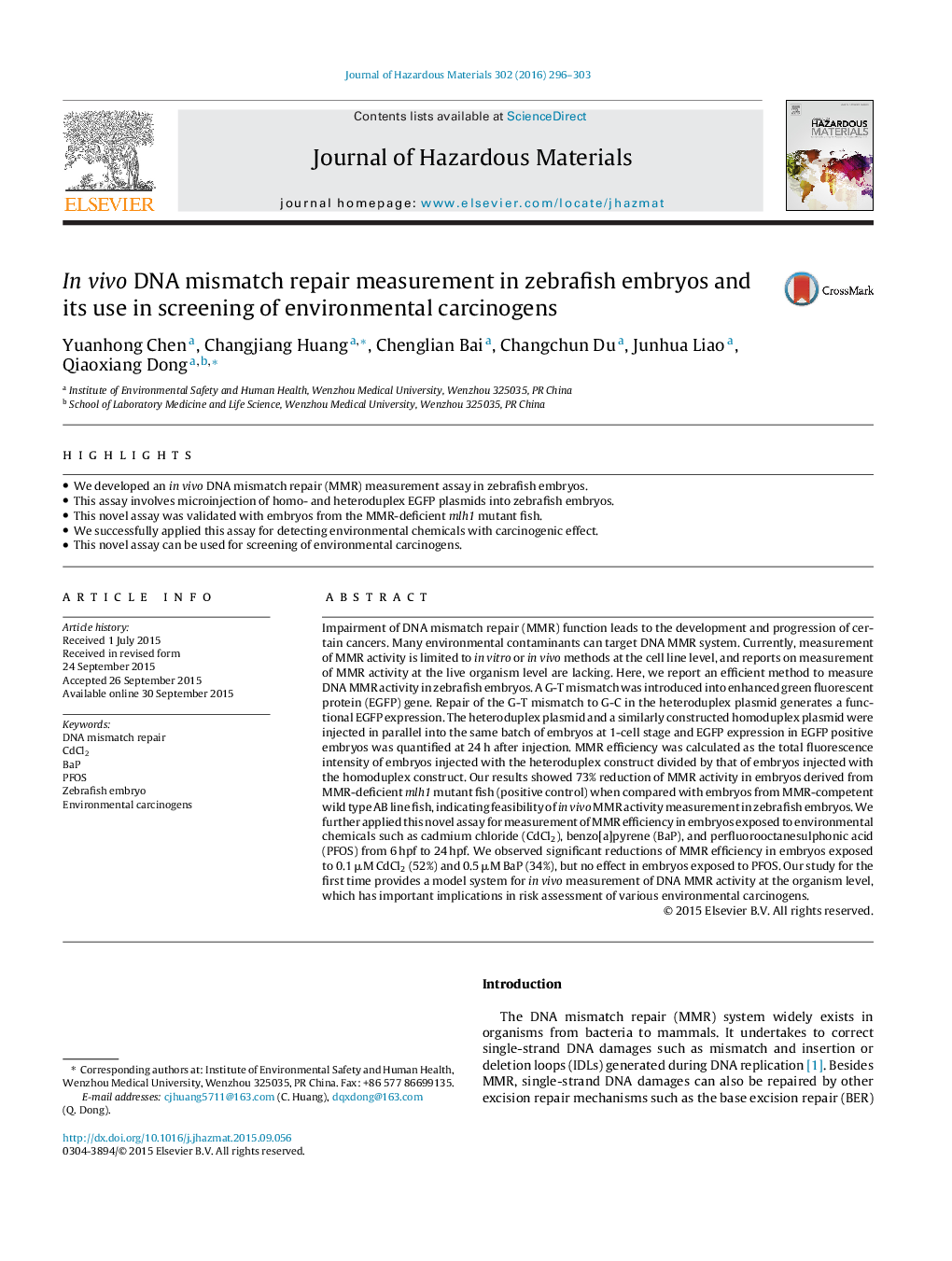| کد مقاله | کد نشریه | سال انتشار | مقاله انگلیسی | نسخه تمام متن |
|---|---|---|---|---|
| 575622 | 1453058 | 2016 | 8 صفحه PDF | دانلود رایگان |
عنوان انگلیسی مقاله ISI
In vivo DNA mismatch repair measurement in zebrafish embryos and its use in screening of environmental carcinogens
ترجمه فارسی عنوان
اندازه گیری اصلاح در اندازهگیری عدم انطباق درون جنین در جنینهای زابرافیش و استفاده از آن در غربالگری سرطانهای زیست محیطی
دانلود مقاله + سفارش ترجمه
دانلود مقاله ISI انگلیسی
رایگان برای ایرانیان
کلمات کلیدی
موضوعات مرتبط
مهندسی و علوم پایه
مهندسی شیمی
بهداشت و امنیت شیمی
چکیده انگلیسی
Impairment of DNA mismatch repair (MMR) function leads to the development and progression of certain cancers. Many environmental contaminants can target DNA MMR system. Currently, measurement of MMR activity is limited to in vitro or in vivo methods at the cell line level, and reports on measurement of MMR activity at the live organism level are lacking. Here, we report an efficient method to measure DNA MMR activity in zebrafish embryos. A G-T mismatch was introduced into enhanced green fluorescent protein (EGFP) gene. Repair of the G-T mismatch to G-C in the heteroduplex plasmid generates a functional EGFP expression. The heteroduplex plasmid and a similarly constructed homoduplex plasmid were injected in parallel into the same batch of embryos at 1-cell stage and EGFP expression in EGFP positive embryos was quantified at 24 h after injection. MMR efficiency was calculated as the total fluorescence intensity of embryos injected with the heteroduplex construct divided by that of embryos injected with the homoduplex construct. Our results showed 73% reduction of MMR activity in embryos derived from MMR-deficient mlh1 mutant fish (positive control) when compared with embryos from MMR-competent wild type AB line fish, indicating feasibility of in vivo MMR activity measurement in zebrafish embryos. We further applied this novel assay for measurement of MMR efficiency in embryos exposed to environmental chemicals such as cadmium chloride (CdCl2), benzo[a]pyrene (BaP), and perfluorooctanesulphonic acid (PFOS) from 6 hpf to 24 hpf. We observed significant reductions of MMR efficiency in embryos exposed to 0.1 μM CdCl2 (52%) and 0.5 μM BaP (34%), but no effect in embryos exposed to PFOS. Our study for the first time provides a model system for in vivo measurement of DNA MMR activity at the organism level, which has important implications in risk assessment of various environmental carcinogens.
ناشر
Database: Elsevier - ScienceDirect (ساینس دایرکت)
Journal: Journal of Hazardous Materials - Volume 302, 25 January 2016, Pages 296-303
Journal: Journal of Hazardous Materials - Volume 302, 25 January 2016, Pages 296-303
نویسندگان
Yuanhong Chen, Changjiang Huang, Chenglian Bai, Changchun Du, Junhua Liao, Qiaoxiang Dong,
